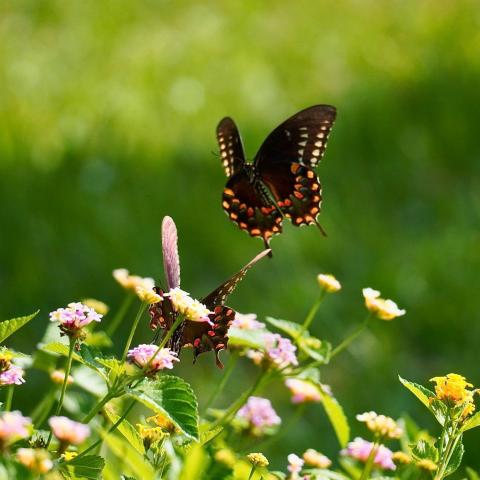Pit stops for pollinators bring native plants to Arizona highways
Pit stops for pollinators bring native plants to Arizona highways

Did you know that ADOT helps to grow new plants by planting the seeds of native plants along state highways? Biologist Alexa Lopezlira told us that ADOT gets rid of unwanted, invasive plants along roadsides to help maintain and encourage growth of native plants.

“When highway construction projects are complete, then it is time to seed the soil with vegetation that thrive in Arizona and make our desert landscape look beautiful,” Lopezlira said, “these plants make a great pit stop for our busy, flying friends.”
Desert plants depend on pollinators of all shapes and sizes to visit flowers and move pollen. A pollinator is an animal, insect, or bird that helps plants make fruit or seeds by eating nectar from flowers. By doing this, the pollinators rub pollen onto their heads or backs and carry it from one plant and to another, fertilizing plants in the process. Pollen is the secret ingredient to helping more plants grow.
One well-known pollinator is the monarch butterfly. ADOT is a supporter and collaborator of a conservation program known as the Monarch Candidate Conservation Agreement with Assurances. “What our involvement means,” Lopezlira says, “is ADOT will be planting and managing butterfly-friendly habitat along roadsides to help monarch butterflies during migration, and help ensure future populations of monarchs thrive.”
Pollinators come in all shapes and sizes, but the most efficient pollinators are almost always critters that can fly fast and can get into small spots that are hard to reach! Arizona’s top five favorite pollinators are hummingbirds, bees, moths, butterflies, and bats. Each of these winged creatures plays a unique role in pollination by visiting plants and flowers most suited to their ability to extract nectar.
Hummingbirds excel at sipping nectar from long tubular shaped flowers easily accessed with their slender beaks, while bees are attracted to cup-shaped flowers suited for shorter bee-tongues. Moths and butterflies don’t have noses, so they use long, fuzzy appendages on their heads, called antennae, to smell for food on their favorite star or trumpet-shaped flowers.
A lesser-known pollinator is the lesser long-nosed bat, which is best suited to pollinating plants and cactus flowers that bloom only at night when bats are most active.
In this matching activity created for ADOT Kids, click here to try your skill at matching pollinators to the plants they like to visit most.
If you like this, please visit ADOT Kids for all sorts of educational stories, activities and videos that will make you smile.
